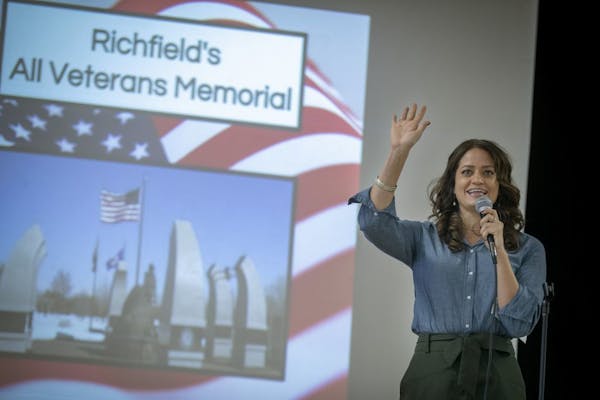Six teenagers from St. Paul are hoping to persuade Metro Transit to change its policy and allow large pets on buses and light-rail trains.
The agency's policy now allows service animals onboard as well as small pets, provided they are kept in carriers. That may work for little Fluffy, said Kelly Johnson, a government affairs liaison with the Animal Humane Society. "But what about larger dogs?" she asked.
The question arose this fall after the Humane Society opened a new veterinary center on University Avenue in St. Paul's Midway neighborhood to provide low-cost services to pet owners with limited resources. The society chose the location because it has found that lack of easy access to affordable clinics is one of the biggest barriers keeping people from owning pets, said Kathy Mock, the Humane Society's chief government affairs and community engagement officer. With a Green Line stop outside the clinic's front door, Mock said the barrier to access might come down if those with sick pets could take them on the train or bus.
Enter the teens, who are part of the society's Youth Camp. They came up with ideas ranging from designating spaces on train cars where pets would be allowed, to having poop bags and cleaning supplies on board, to playing soothing music to keep animals calm.
The students proposed rules to keep animals on a leash and require riders to clean up after their pets before getting off. They also suggested a fare surcharge of 50 cents to $1 per pet, or a yearly pass to cover costs. Another idea was a "Paw It Forward" fundraising campaign.
Last week the students pitched their plan to Kris Fredson, a member of the Metropolitan Council, the governing body that regulates Metro Transit. He promised to bring their ideas to the Met Council Transportation Committee for consideration.
"Their presentation was excellent, and they were pretty creative," Fredson said. "It is generating a conversation about what we think might be doable in the future. We are grateful for their vision."
Metro Transit spokeswoman Laura Baenen said the agency applauds the youths' civic-mindedness but that a policy change is unlikely right now. Biohazards are a big worry in light of the pandemic, she said, and allowing pets on board outside of existing policy would increase concerns and create more cleanup work.
"It's great they are thinking about public transportation and how it can help people," she said.
Austin up, Moorhead down
Moorhead is No. 1 — but there's probably not a lot of cheering going on in the Red River Valley city. It's deemed to have the worst drivers in the state, according to QuoteWizard.
The insurance comparison shopping website evaluated more than 150,000 insurance quotes from Minnesota's 25 most populous cities. The firm ranked them by crash rates, speeding tickets, DWIs and citations to determine the best and worst driving cities.
Inver Grove Heights ranked as the second worst driving city, followed in order by St. Cloud, Shakopee and Elk River. The city with the best drivers was found to be Austin, followed by Winona, Eden Prairie, Hopkins and Albert Lea.
A wreck increases a Minnesotan's annual insurance rates by an average of $982, or 35%. Accidents can stay on a driver's insurance record for three years in Minnesota — meaning a crash in that period can cost a driver an average extra $2,946, QuoteWizard said.
Follow news about traffic and commuting at The Drive on startribune.com. Got traffic or transportation questions, or story ideas? E-mail drive@startribune.com, tweet @stribdrive or call Tim Harlow at 612-673-7768.

Gallery: AJR performs at Xcel
After 40 years in Park City, Sundance exploring options for 2027 film festival and beyond

An NPR editor who wrote a critical essay on the company has resigned after being suspended

